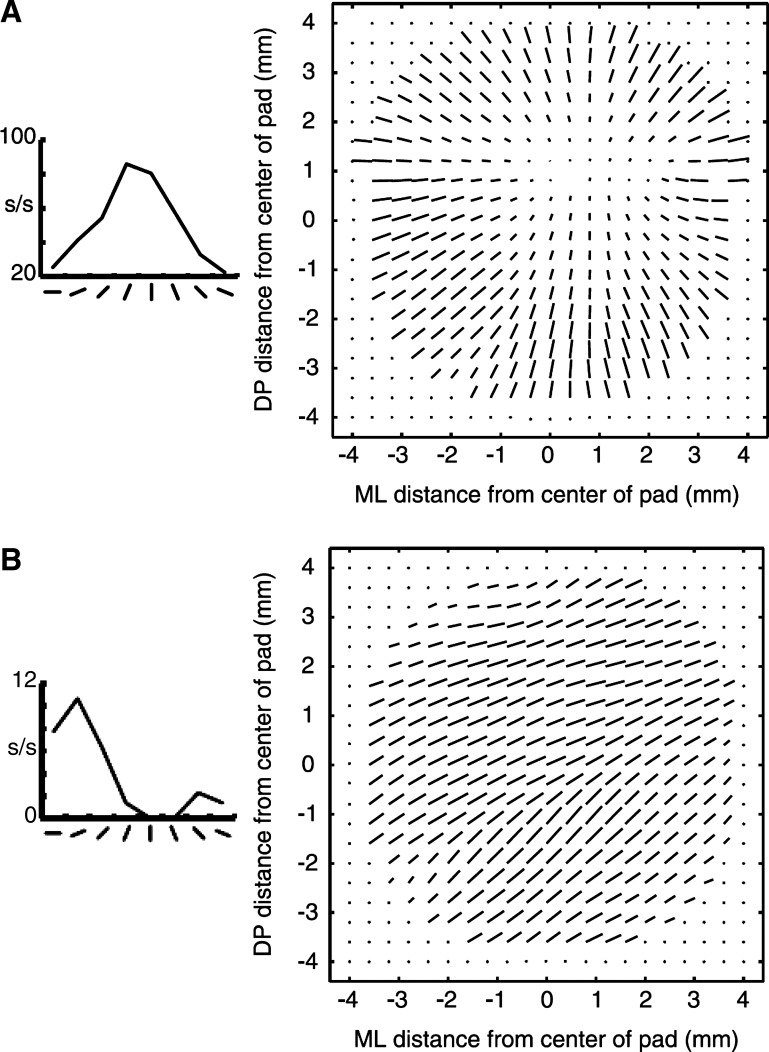Fig. 6.
Orientation tuning and vector fields in S2. A and B, left: response rates of two S2 neurons to bars presented to the center of a finger pad at different orientations. A and B, right: vector fields indicate estimated orientation preference (vector direction) and tuning strength (vector magnitude) across a grid of positions spanning a single finger pad. Note that the vector fields are constructed from neural responses to a large bar stimulus rotated to 1 of 8 orientations and indented into the distal fingerpad at multiple locations per orientation. Response functions and vector fields for 2 neurons are depicted. Although the neurons each exhibit clear orientation tuning for bars presented at the center of the finger pad, their vector fields differ dramatically reflecting distinct orientation tuning mechanisms. A: divergent vector field, which can be explained by a linear RF model comprising a single excitatory field. B: invariant vector field, which cannot be accounted for with a linear RF model (adapted from Thakur et al. 2006).

